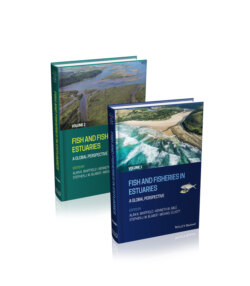Читать книгу Fish and Fisheries in Estuaries - Группа авторов - Страница 90
3.6.7 Lateolabrax japonicus (Lateolabracidae)
ОглавлениеLateolabrax japonicus is abundant in East Asian coastal waters. In the marine Ariake Bay (Japan) spawning occurs in winter, where eggs hatch and early‐stage larvae develop and grow (Matsumiya et al. 1981, 1982, 1985). Postflexion larvae and small juveniles (≥15 mm SL) migrate to the tidal Chikugo River where their variable growth and mortality rates (to ~25 mm SL) determine recruitment outcomes (Shoji et al. 2006, Shoji & Tanaka 2007a, 2007b). Highly variable growth and survival rates of larvae to 15 mm SL in Ariake Bay (Shoji & Tanaka 2007a, 2008) are density independent and survival increases at higher temperatures (Shoji et al. 2006, Shoji & Tanaka 2007b), which are positively related to Chikugo River freshwater discharge.
After ingressing to the tidal Chikugo River, early‐stage juveniles (15–20 mm SL) of Lateolabrax japonicus find best feeding conditions near the salt front and estuarine turbidity maximum (Islam et al. 2006) where the copepod Sinocalanus sinensis is dominant prey. In this period, weight‐specific growth (G), mortality (M) and an index of recruitment potential (G/M) all become density dependent (Shoji & Tanaka 2007a, 2008) while continuing to be strongly related to temperature (Figure 3.23) (Shoji & Tanaka 2007b). In 11 years of observations, 24‐fold variability in annual abundances of 15 mm larvae declined to 9.4‐fold annual variability at 20 mm SL (Shoji & Tanaka 2008), which suggests that density‐dependent mortality and regulation of recruited abundance occur in the 15–20 mm, earliest juvenile stage. Limited abundance of the dominant prey S. sinensis is the probable factor driving density dependence.
The most important controls and regulators of recruitment variability in Lateolabrax japonicus are (i) density‐independent processes controlling growth and mortality of pre‐immigration larvae in Ariake Bay; (ii) positive effects of temperature on growth and survival of pre‐ingress larvae in Ariake Bay and post‐ingress larvae in the Chikugo River; (iii) positive effects of moderate freshwater discharges in the Chikugo River on survival and growth and (iv) density‐dependent growth and mortality of 15–25 mm SL juveniles during Chikugo River residence.
